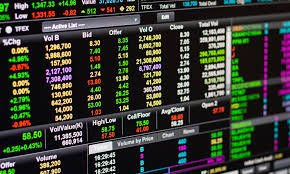Top CFD Trading Strategies for Volatile Markets

Volatile markets present both risk and opportunity for traders. For those trading Contracts for Difference (CFDs), market volatility can be an advantage—if managed with the right strategies. CFDs allow traders to speculate on price movements without owning the underlying asset, and with volatility comes the potential for significant profit, but also loss. That’s why having a clear plan is essential when trading during uncertain or fast-moving conditions.
In this article, we will explore the top CFD trading strategies designed specifically to take advantage of market volatility, as well as tips to manage risk effectively.
Understanding Volatility in CFD Trading
Volatility refers to the degree of price movement within a financial instrument over a given period. In highly volatile markets, asset prices can swing dramatically in a short time, driven by events such as economic data releases, geopolitical news, central bank decisions, or market sentiment shifts.
CFD traders often seek to capitalize on these price movements by opening both long and short positions, depending on the expected direction of the market. However, this fast-paced environment requires disciplined strategies to avoid impulsive decisions and unnecessary losses.
Why Strategy Matters in Volatile Conditions
In volatile conditions, emotions like fear and greed tend to dominate. Without a clear plan, traders may:
- Overtrade or revenge trade after losses
- Set tight stop-losses that get triggered by normal price swings
- Misjudge momentum and enter trades too late
Using structured strategies can help you remain focused, disciplined, and better prepared to handle price fluctuations.
1. Scalping Strategy
Overview
Scalping is a fast-paced trading technique that aims to profit from small price changes. In volatile markets, price movements occur more frequently, providing more scalping opportunities throughout the day.
How It Works
- Trades are opened and closed within minutes or even seconds
- Traders use 1-minute or 5-minute charts
- High trade frequency with small profit targets (5–20 pips)
- Leverage is often used to amplify returns
Tools and Indicators
- Moving averages (MA)
- Bollinger Bands
- RSI (Relative Strength Index)
- Price action and candlestick patterns
Risk Tips
- Use tight stop-losses to limit exposure
- Avoid scalping during major news announcements unless experienced
- Maintain a high win rate to offset small profits
2. Breakout Trading Strategy
Overview
Breakout trading focuses on identifying key support or resistance levels and entering trades when price breaks through those levels with increased momentum.
How It Works
- Traders look for consolidation zones or chart patterns like triangles, flags, and rectangles
- Entry is triggered once the price breaks and closes outside the range
- Stop-loss is placed just below (for long) or above (for short) the breakout zone
- Profit target is usually the size of the prior consolidation
Tools and Indicators
- Volume indicators to confirm breakouts
- Trendlines and chart patterns
- ATR (Average True Range) to assess potential price movement
Risk Tips
- Confirm the breakout with volume and momentum before entering
- Avoid false breakouts by waiting for candle confirmation
- Use trailing stops to lock in profits during strong moves
3. News-Based Trading Strategy
Overview
Economic releases and geopolitical events can cause sharp price swings. Traders who understand the market’s expectations and the impact of news can profit from these movements.
How It Works
- Monitor the economic calendar for high-impact events (e.g., interest rate decisions, GDP, NFP, CPI)
- Analyze consensus forecasts and prepare for different scenarios
- Enter trades just before or after news, depending on your approach
- Trade currency pairs or indices most affected by the news
Tools and Indicators
- Economic calendar (e.g., Forex Factory, Investing.com)
- Real-time news feed
- Volatility filters
Risk Tips
- Expect slippage and wider spreads during news
- Use smaller lot sizes to manage risk
- Avoid overleveraging around unpredictable events
4. Trend Following Strategy
Overview
This strategy seeks to capture gains by riding the momentum of established market trends. In volatile markets, trends may be strong and sustained, providing profitable trade setups.
How It Works
- Identify a trending asset using price action and indicators
- Enter trades in the direction of the trend (buy in uptrend, sell in downtrend)
- Use pullbacks as entry opportunities
- Exit when trend shows signs of reversal
Tools and Indicators
- Moving Averages (e.g., 21 EMA, 50 SMA)
- MACD (Moving Average Convergence Divergence)
- ADX (Average Directional Index)
- Trendlines
Risk Tips
- Avoid entering late in a trend
- Use a trend filter to confirm direction on a higher timeframe
- Set trailing stops to protect profits
5. Range Trading Strategy
Overview
Although volatility typically breaks price ranges, markets may still oscillate between support and resistance levels during quiet periods within broader volatility. Range trading aims to profit from these oscillations.
How It Works
- Identify a horizontal channel where price is bouncing between support and resistance
- Enter long at support and short at resistance
- Exit near the opposite boundary
Tools and Indicators
- RSI and Stochastic Oscillator for overbought/oversold signals
- Support and resistance zones
- Bollinger Bands
Risk Tips
- Only use this strategy when the market lacks clear directional bias
- Be ready to switch to a breakout strategy if the range breaks
- Use tight stop-losses outside the range to control risk
Managing Risk in Volatile Markets
No matter how effective a strategy may be, risk management is critical in high-volatility trading. Here are key tips to protect your capital:
Use Stop-Loss and Take-Profit Orders
Always define your exit points before entering a trade. A stop-loss limits your downside, while a take-profit ensures you lock in gains.
Position Sizing
Avoid risking more than 1–2% of your trading capital per trade. Use a position size calculator based on your account balance, stop-loss size, and desired risk.
Monitor Leverage
Volatile markets amplify the effect of leverage. Use it cautiously to avoid margin calls or rapid losses.
Stay Calm and Avoid Revenge Trading
Emotions run high in volatile conditions. Stay disciplined, stick to your plan, and never chase the market.
Conclusion
Volatility can be a trader’s best friend or worst enemy. With the right CFD trading strategies, you can navigate turbulent markets and potentially generate significant profits. Scalping, breakout trading, news-based strategies, trend following, and range trading each offer unique advantages depending on the market context.
However, no strategy guarantees success. Pair each approach with solid risk management, continuous learning, and a clear understanding of your own risk tolerance. That’s the key to staying profitable and consistent in volatile CFD markets.







